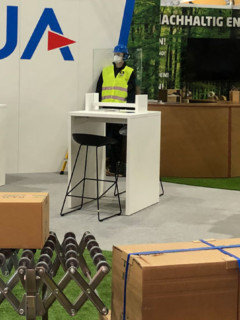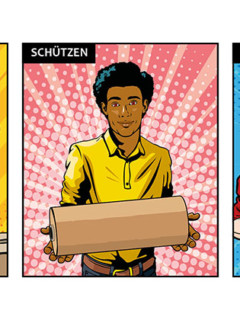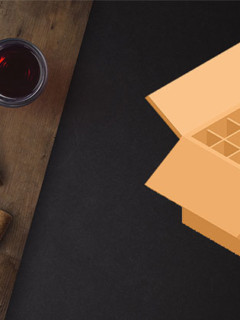Just in time for the turn of the year, most of us would like to get rid of one or two unpleasant habits. But “clearing the air inside” is not much different from cleaning and tidying in the bathroom, kitchen or warehouse, in the workshop or canteen: the more stubborn the “dirt”, the harder you will have to scrub. And the more sensitive the “surface”, the gentler you will have to be. Now clean properly:
The two sides of a sponge cloth
So that you don’t have to change “tools” when cleaning, most of our sponges have two surfaces. The soft side for gently wiping and cleaning glass, ceramic or acrylic surfaces, for example, and the coarse side for scrubbing and loosening dirt on non-sensitive surfaces.
No matter how tempting it may be, you should not simply increase the pressure or use coarse tools on vulnerable surfaces. You may have success in the short term, but in the long term you will have a lot more work. This is because improper treatment creates the finest micro-cracks, in which dirt will easily accumulate in the future.
Anything but one-sided and not a bit superficial
While the synthetic surface made of polyurethane with integrated, rounded abrasive grains dissolves the dirt gently, without scratches even on sensitive surfaces and yet effectively, the highly absorbent sponge side made of vegetable fibres simply absorbs the whole “mess”.
So the two-sidedness makes perfect sense with Putzschwamm Eco.
Sponge over – it can take anything
When it comes to absorbing larger amounts of liquid, our “Azella” from Spontex Professionel is ahead of the game when it comes to cleaning. It is made of 100% cellulose and is therefore extremely absorbent: It easily “swallows” quantities of up to 20 times its own weight. And the Azella can really take a beating in other respects too: it is resistant to bleach and many other chemicals and can withstand machine cleaning at 90 degrees, and even disinfecting and sterilising. This makes it the ideal cleaning partner wherever things get “aggressive”, such as in workshops and industrial operations. It complies with the REACH regulation and can be sterilised in an autoclave at 120 degrees for 20 minutes.
Sponges made of pure cellulose are predominantly made of waste paper and are therefore extremely environmentally friendly, both in production and disposal.
The right cloth is decisive
An overview of the different materials and their areas of application: https://www.hauswirtschaft.info/reinigung/tuecher.php














